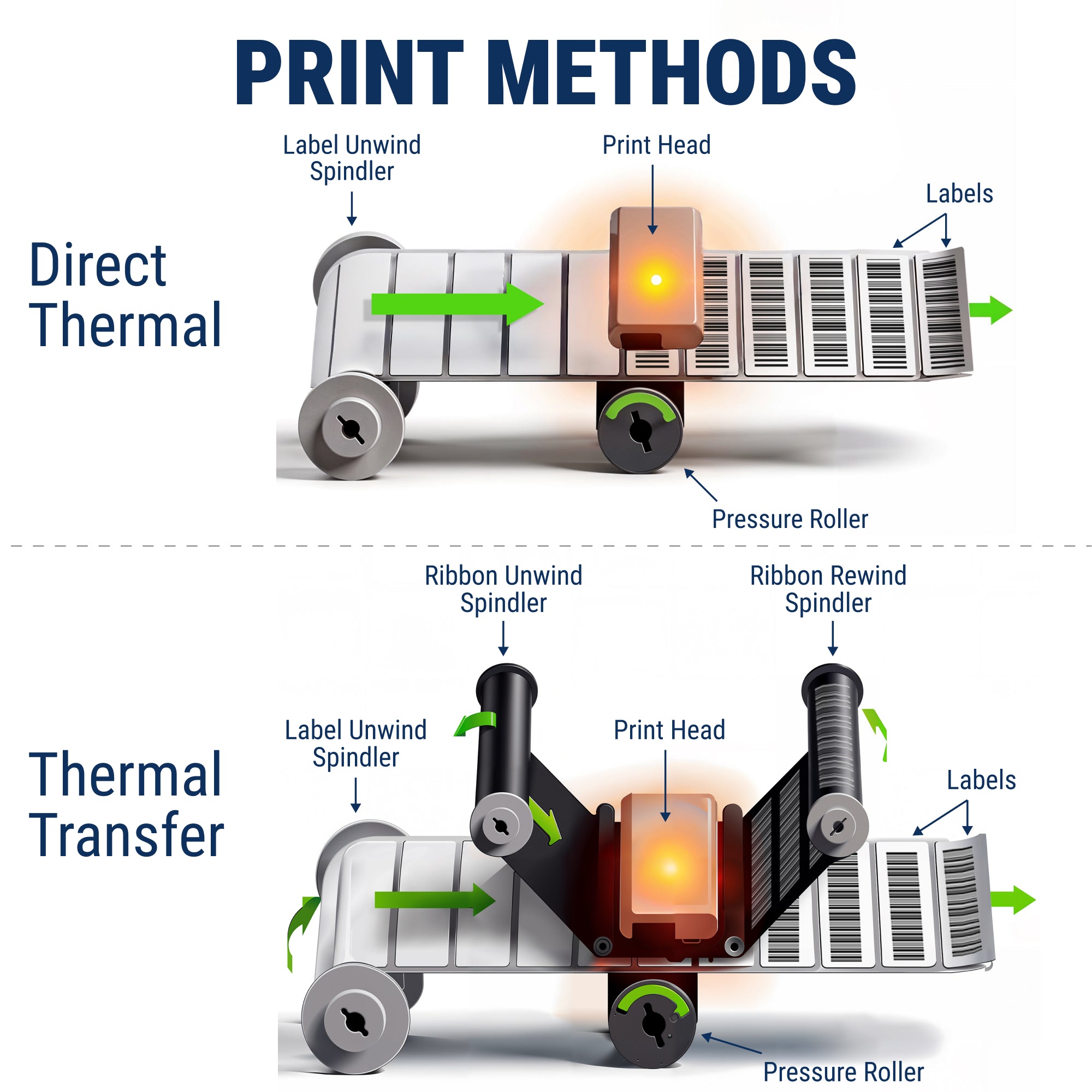Choosing the right type of thermal label can make a big difference in print quality, durability, and long-term performance. Both Direct Thermal and Thermal Transfer labels are widely used across industries, from shipping and warehousing to asset tracking and automotive maintenance, but each printing technology offers unique strengths.
At McAuley Labels, we supply GoDEX-compatible thermal labels in both formats, designed for reliable performance in every environment.
What Are Direct Thermal Labels?
Direct Thermal labels use heat-sensitive paper that darkens when it passes under the printer’s heated printhead, no ribbon required.
They’re simple, fast, and cost-effective, ideal for applications where labels don’t need to last long.
Best for:
-
Shipping labels
-
Retail price tags
-
Receipt or temporary product labeling
-
Barcode labels for short-term tracking
Pros:
-
Lower cost (no ribbons)
-
Easy to load and print
-
Crisp barcodes and text
Cons:
-
Sensitive to heat, light, and moisture
-
Can fade or discolor over time
-
Not ideal for outdoor or long-term use

What Are Thermal Transfer Labels?
Thermal Transfer labels use a ribbon (wax, resin, or wax-resin mix) that melts onto the label surface through heat.
This process produces sharp, permanent prints that resist water, oil, and abrasion.
Best for:
-
Asset tags and equipment labels
-
Inventory tracking
-
Industrial, laboratory, and automotive use
-
Long-term or outdoor applications
Pros:
-
Excellent durability and resistance
-
Works on paper and synthetic materials (like polyester or polypropylene)
-
Ideal for barcodes that must remain readable for years
Cons:
-
Requires ribbons
-
Slightly higher cost per print

🧩 How to Decide: Which Label Type Should You Use?
| Your Use Case | Recommended Label Type |
|---|---|
| Short-term shipping or retail | Direct Thermal |
| Harsh environments (heat, oil, moisture) | Thermal Transfer |
| Long-term storage, compliance labels | Thermal Transfer |
| Simple one-day logistics | Direct Thermal |
| Automotive or asset tracking | Thermal Transfer |
If you print frequently and want reliability across changing conditions, Thermal Transfer is your best investment.
Material Options That Enhance Durability
For industries requiring extra toughness, McAuley offers white polyester synthetic labels that are waterproof, tear-resistant, and compatible with GoDEX Thermal Transfer Printers.
These labels pair perfectly with resin ribbons for fade-proof printing in the most demanding environments.
👉 Explore: GoDEX Synthetic Labels – Waterproof & Durable White Polyester
Pro Tip: Combine the Right Printer and Labels
Using the right printer technology ensures optimal performance:
Each GoDEX printer is precision-engineered for consistent label feeding, crisp print definition, and reliable ribbon handling.
👉 Compare models here: GoDEX Label Printers Collection
💡 Conclusion
Choosing between thermal transfer and direct thermal labels depends on how long your labels need to last and where they’ll be used.
If you need a simple, short-term solution, go with Direct Thermal.
If you demand durability, professional presentation, and resistance to tough conditions, Thermal Transfer is the clear winner.
Both are available from McAuley Labels, tested with GoDEX printers for perfect compatibility and long-lasting performance.

